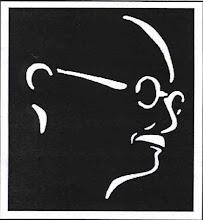Bangalore, New Delhi, November 14 : It played hide and seek in the cloudy skies above the Indian Space Research Organization’s command centre tonight but in the deep reaches of space, when it was 8.31 pm on the ground here, India finally touched the moon.
A small cube-shaped instrument, with the Tricolour on all four sides, met its tryst with the lunar surface signalling a mission accomplished step by flawless step over 24 days and nights — and a giant leap for the country’s space programme.
The 35-kg Moon Impact Probe (MIP), one of the 11 payloads on Chandrayaan-I, ejected from the main spacecraft — orbiting around the moon at a distance of 100 km — at the appointed time of 8.06 pm. And, after a 25-minute textbook journey, hit the lunar surface at a designated location on the Shackleton crater near the moon’s south pole.
The MIP became the first Indian object to leave its imprint on the moon’s surface. The United States, the erstwhile USSR and the European Space Agency are the only other three to have “deliberately landed an object on the moon.”
“As promised, we have given the moon to India,” said a beaming ISRO chairman G Madhavan Nair, the face to this historic achievement scripted by a team of hundreds of scientists of all disciplines working 24 by 7 for close to four years at a cost of Rs 386 crore, the least expensive mission to the moon so far. “It has a huge symbolic value apart from being a tremendous scientific achievement,” said Mylswamy Annadurai, mission director of Chandrayaan-I. “We are literally over the moon,” he told The Indian Express. “But there is still a lot of science left in Chandrayaan. The real scientific experiments start now.” The spacecraft, which is now left with 10 payloads, will continue in its present circular orbit for the next two years and carry out a variety of scientific experiments. These include testing the possibility of presence of water on the moon’s surface, mineral mapping of the lunar terrain and details about the presence of Helium-3. If the sense of joy at ISRO’s Telemetry Tracking and Command Centre was overwhelming, so was the tension as the clock pushed past 8 pm. Giant screens across the room streamed in various health parameters for the probe — including temperatures and data transfer rate. Former President A P J Abdul Kalam, who had proposed the idea of landing a probe on the moon...

No comments:
Post a Comment